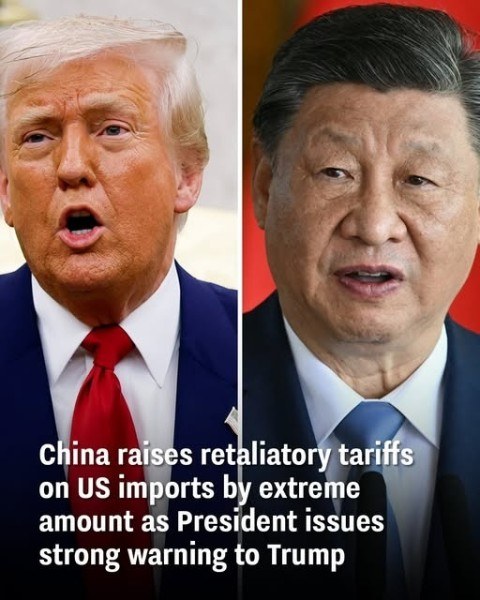China has dramatically escalated its retaliatory tariffs on U.S. imports, taking the trade conflict with President Donald Trump to unprecedented levels. In direct response to Trump’s recent tariff increase of up to 145% on Chinese goods, China has elevated its own tariffs from a significant 84% to a staggering 125%. This marks a significant economic confrontation between the two global superpowers.
The trade war, which had been reignited after Trump resumed the presidency in January, has rapidly intensified. On April 9, the Trump administration implemented the new tariff rates, targeting a broad range of Chinese products. Just a few days later, on April 12, China struck back with its own massive tariff hike. Interestingly, the U.S. decision to escalate tariffs on China came on the same day it announced a 90-day pause on tariffs for most other countries, including one with no human inhabitants—an island home only to seals and penguins.
In a statement, China’s State Council Tariff Commission condemned the U.S. actions as “unilateral bullying,” accusing the drastic tariff increases of violating international trade norms and economic principles. The commission pointed to several Chinese laws as the legal foundation for its retaliatory actions, emphasizing that the tariffs were approved by the State Council and took effect immediately.
The statement clarified that under the new policy, the tariff rate initially set in an earlier measure would now rise to 125%, essentially rendering any U.S. goods entering the Chinese market economically unfeasible. The Chinese government further warned that should the U.S. continue its aggressive tariff policies, China would not acknowledge or entertain any additional provocations.
The trade war reignited after Trump signed an executive order, accusing China, Mexico, and Canada of being complicit in illegal immigration and drug trafficking into the United States. This executive order signaled the beginning of a fresh wave of tariffs, starting with a 10% blanket duty on Chinese imports on February 4. In retaliation, China responded just days later with its own tariffs, imposing 15% duties on coal and liquefied natural gas, and 10% on crude oil, agricultural machinery, and large-engine vehicles made in the U.S.
Since then, the exchange of tariffs has continued to escalate. As things stand now, China has imposed a 125% tariff on American goods, while the U.S. has imposed tariffs on Chinese imports as high as 145%.
This intensifying economic standoff shows no signs of de-escalating, and with both sides firmly entrenched, the global market is bracing itself for the consequences of what is shaping up to be one of the most severe trade confrontations in recent history.
